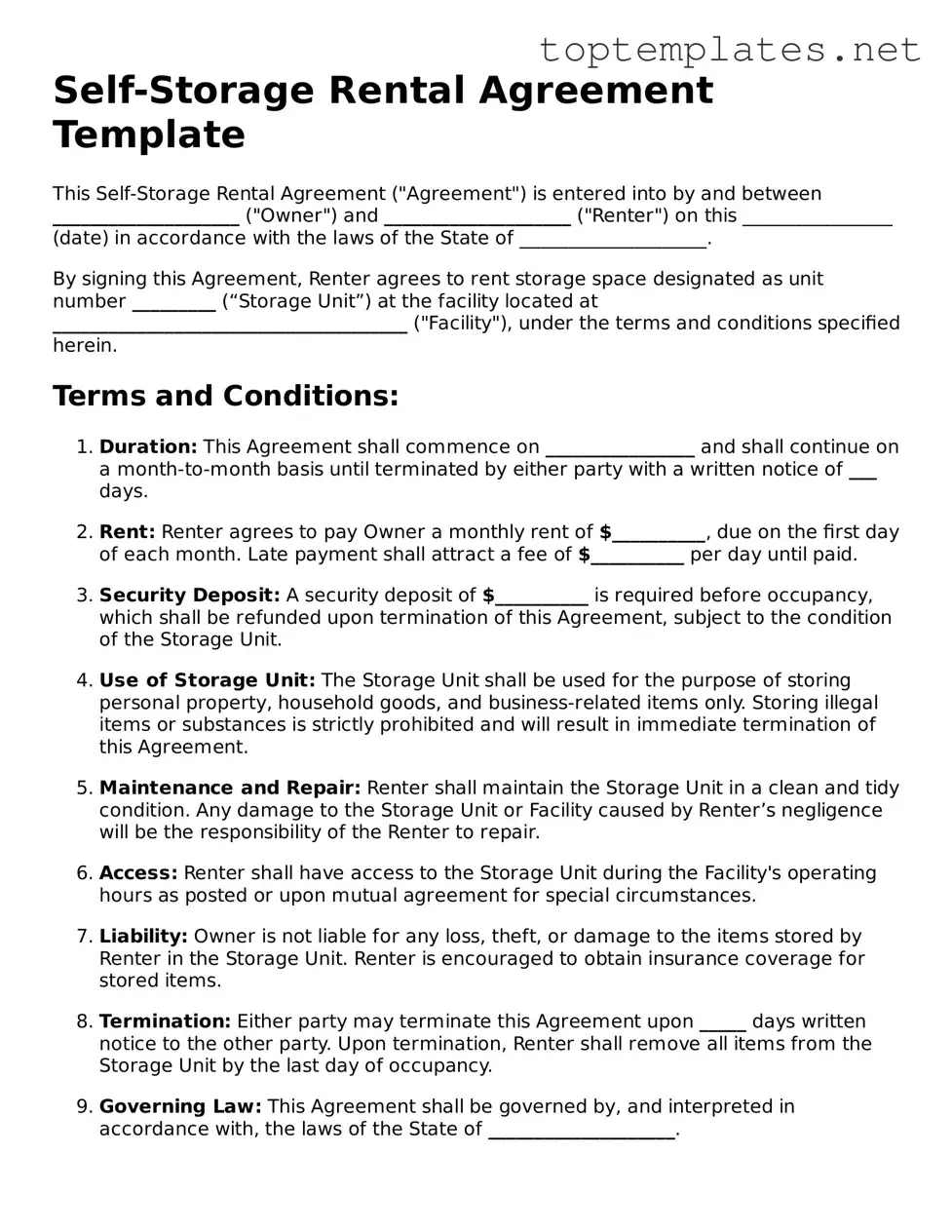What is a Self-Storage Rental Agreement?
A Self-Storage Rental Agreement is a legally binding document between a storage facility and an individual or business renting storage space. It outlines terms and conditions such as rental payments, duration, use of the space, and the responsibilities of each party.
How do I sign up for a self-storage unit?
To sign up for a self-storage unit, first select a storage facility that meets your needs. Visit the facility or their website to inquire about availability, size options, and pricing. You'll need to fill out a Self-Storage Rental Agreement form and provide identification. Payment for the first rental period is usually required to complete the signup process.
What should I check before signing the agreement?
Before signing the agreement, thoroughly review the terms including the rental period, monthly payment, late fees, and security deposit. Ensure you understand the facility's policies on access hours, prohibited items, and termination of the agreement. Ask questions if any clause is unclear.
Can I share my self-storage unit with someone else?
Sharing a self-storage unit with someone else may be allowed, but policies vary by facility. It's essential to disclose this intention before signing the agreement. The facility might require additional documentation or adjustments to the agreement to include the other party.
What happens if I miss a rental payment?
If you miss a rental payment, the facility will notify you of the due payment and any late fees incurred. Continued failure to pay may lead to restricted access to your storage unit and ultimately, the facility might take legal action to vacate your unit. It's crucial to communicate with the facility if you anticipate payment issues.
Can I cancel my Self-Storage Rental Agreement early?
Yes, you can typically cancel your Self-Storage Rental Agreement early, but you may be subject to fees as outlined in your agreement. Some facilities offer prorated refunds for unused time, while others might charge a cancellation fee. Review your agreement's terms or speak with the facility manager for specific information on early cancellation.
